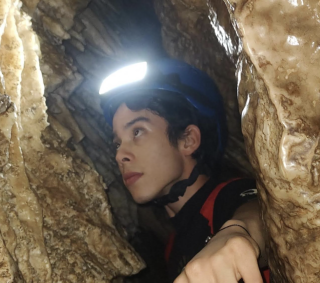[Op-Ed] Brazilian students discover and record a unique cave during class!
In the middle of a class, students told their teacher that there were some rock
MORE IN THIS SECTION
In the middle of a class, students told their teacher that there were some rocks on top of others 50 meters away from their school. So, they all decided to hold a field trip to talk about geology. When they got there, they discovered that the "rock" was, in fact, a cave that was unique to the country! It sounds like a comic book, but it is a fact that happened in Brazil, in the city of Apiaí, with students from the Vera Lucia Cosmo Lucena State School.
According to Brazilian law, a natural underground cavity is any space accessible to humans, formed by natural processes, regardless of its size or type of rock. And look how many humans were inside this space!

STUDENTS AND TEACHERS IN THE REGISTERED CAVITY
The cave is of granite lithology, that is, formed by granite rocks. These rocks are formed from magma cooled below the Earth's surface. Over time, the granite can be exposed to the surface due to the action of rain, wind and other natural weathering processes, which remove the layer of soil and rocks that cover it. As the granite is exposed, it can become detached. When several blocks of granite become detached, they can fall on top of each other, creating spaces between them that result in cavities — as was the case with this discovery! This cavity was classified as a shelter, and was named Abrigo do Conceição by the same students who discovered it, which can be translated as Conceição's Shelter, in honor of the place where they are located, called Conceição do Herval.
The field class focused on this process of speleological formation. In addition, some species of arachnids were identified at Abrigo do Conceição, as well as evidence of possible use by mammals and birds as a refuge, roosting or resting place. These facts further reinforce the importance of protecting natural cavities, regardless of their size, type of rock or depth. It is not up to human judgment to define whether a natural space is useful or not; this criterion should be based on ecological principles. After all, such spaces are useful to nature, provide ecosystem services and help protect the balance of the environment as a whole.

GRANITE ROCK ON THE ROOF OF THE CONCEIÇÃO SHELTER
Countries like Brazil have an enviable and diverse speleological heritage, in addition to natural riches spread throughout the territory. Understanding the surroundings of educational spaces and valuing popular knowledge, integrating it into educational processes, should be a goal for educators around the world. Bringing students closer to their environment and their prior knowledge, adding new knowledge, promotes a more effective and inclusive education.
RELATED CONTENT
How much does science fail to discover because it is not integrated into communities? After all, students were already familiar with the cavity long before it was registered in the National Registry of Caves in Brazil. And even worse, how many scientific discoveries have been made with the support of communities without them receiving due credit?
So, on behalf of those who have never been recognized, I would like to highlight in this article the merit of Kairton de Lima, Pablo Barbosa, Igor Carvalho, Daniel de Oliveira, Renan Machado and Luan de Lima — student scientists who enriched Brazil's heritage with yet another documented cave. I also recognize their educators, Elizabete de Oliveira and myself, Edson Sarti, who had the honor of overseeing the registration. I am certain that, from now on, they will all become tireless defenders of these important heritage sites.
It is also worth highlighting the work of speleological groups, especially the Pierre Martin Speleology Group, which, through Bruno Lenhare, promptly registered the cave, number 970 for the state of São Paulo, based on observations made by students in the field.

STUDENTS AT THE CONCEIÇÃO SHELTER AT THE TIME THE CAVE WAS FOUND
Speleology should always take into account its integration with communities. As of the date of publication of this text, Brazil has 433 caves formed in igneous rocks, such as granite. In comparison, caves in limestone rocks total more than 5,250 records throughout the territory. In this context, the Conceição Shelter, or SP-970, recorded by students in Elementary School II, represents a record of great relevance.
People's right to their own spaces, access to information, quality education and the possibility of doing science are essential. Knowledge that does not go beyond the doors of the university and does not reach the people is not useful knowledge. Science that does not serve the population does not fulfill its objective of making everyone's life more fair, safe, healthy and dignified.

STUDENTS AND TEACHERS AT THE END OF THE REGISTRATION OF CAVITY SP-970






LEAVE A COMMENT:
Join the discussion! Leave a comment.